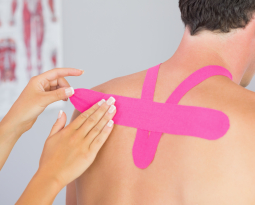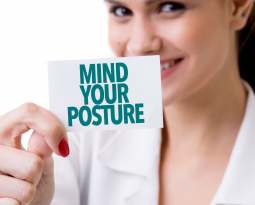
Your heartburn isn’t just from your food. It’s from your posture.
Your heartburn isn’t just from your food. It’s from your posture.
More than Sixty percent of the US adult population will experience some time of gastro esophageal reflux disease (GERD). More commonly referred to has “Heart Burn”, approximately seven million people in the United States have symptoms of GERD, with more than 20% of them reporting weekly occurrence. The most common advice for symptom relief is medication and nutrition advice. Although medication may temporarily relive the pain its more important to correct the cause. The research on incorrect posture being a cause of this is growing each year.
Hunched over seated posture reduces the normal space for your organs
The symptoms of GERD occur when the digestion process is disrupted. Typically what will happen is the food that is being digested or even more painfully the stomach acid used in the breakdown of the food will actually be blocked and flow backwards into the esophagus which causes the burning sensation in the chest. When we develop postural distortion patterns that change the normal positions of our body, including our vital organs, this can disrupt the normal function of these organs. Such as the normal flow of the digestion process from the stomach to the intestines. This reduction in normal flows, or increases in back flow increases the chances for the stomach acid to enter into the esophagus causing the burning sensation.
When posture degenerates it disrupts the normal function of the organs.
It has been shown the postural position in which you are during and after you eat will increase the symptoms of GERD. An upright and correctly seated posture during and after eating will reduce the symptoms of GERD. Unfortunately many Americans have postural distortion patterns placing them in hunched, or forward leaning posture during and after eating. This posture compacts the chest and stomach compartments creating the blockages previously discussed. Posture is not only about appearance but also plays a vital factor in the function of the body, such as properly digesting our foods and reducing the symptoms of GERD.
Try this Posture Challenge to see if you have a postural distortion pattern
If you have ever had heartburn you have most likely had a postural distortion pattern. To check your self for the development of these postural problems do a 30-minute posture challenge. At your next meal try to sit the entire meal without resting you’re back against the chair. Sit up straight, with your shoulders back, and don’t lean against the chair. If you cannot do this for 30 minutes you most likely have a postural distortion pattern. To know for sure go to www.AmericanPostureInstitute.com and get a detailed Posture Diagnosis Online.
4 Tips to help with GERD
Posture Habits Re-education
- Become aware of your posture
- Your posture develops from your daily habits. If you begin to focus on your posture and become aware of it, you will begin to correct it. Over time this will be come a subconscious awareness and your posture will be improved from it.
Posture Rehabilitation
- Stretch the space for your organs
- The cobra is a great exercise to help stretch the diaphragm and muscles connecting through the digestion cavity. Lay on your stomach. Using your arms push your chest up, and try to look as far up and back as you can. You may need to start on your elbows until you have gained enough flexibility to move up to full stretch. Perform this stretch everyday for as long as you can hold it. Focus on deep breathing while holding the stretch.
- Deep Breathing
- Most of us don’t breathe correctly, and this can cause issues with our posture in regards to the digestion process. Practice diaphragmatic breathing several times a day. Lie flat on your back, with your knees slightly bent. Place one hand on your chest and one on your stomach. Breathe in deeply through your nose using your diaphragm. You should see the hand on your stomach move upward as you inhale, but the hand on your chest should remain still. Exhale deeply, tightening your stomach muscles and keeping the hand on your chest still.
Spinal Alignment
- Hanging Stretch
- Stretching exercises loosen and strengthen abdominal and supportive muscles, while helping to promote the alignment of the spine and chest cavity. When you have incorrect posture of it can cause portions of the stomach to slide in and out of the hiatus. When the stomach is herniating into the hiatus, the esophageal sphincter can’t close properly. Stretch with one arm placed up to a ledge or bar, grab on and allow your body to hang and stretch. Let your body hang loosely and stretch your torso as much as possible. Repeat this several times a day to encourage protruded portions of your stomach to slide back into your abdominal cavity, and increasing proper posture.
For more information on how your posture may be causing your health problems, how to stay healthy through proper posture, or for more ways to improve your posture contact Dr. Mark Wade at: API@AmericanPostureInstitute.com or find more information like this at www.AmericanPostureInstitute.com
Reference:
- Effects of Posture on Gastro-Oesophageal Reflux. Stanciu C. Bennett J.R. Digestion 1977;15:104–109 (DOI:10.1159/000197991)
- Effects of posture on gastric emptying and satiety ratings after a nutritive liquid and solid meal. Theresa A. Spiegel , Harry Fried , Christine D. Hubert , Steven R. Peikin , Jeffry A. Siegel , Louis S. Zeiger. American Journal of Physiology – Regulatory, Integrative and Comparative Physiology. Published 1 August 2000. 279no. 2, R684-R694
- Acid Reflux (GERD) Statistics and Facts. Written by Julie-Ann Amos | Published on June 30, 2012. Medically Reviewed by George Krucik, MD. http://www.healthline.com/health/gerd/statistics













